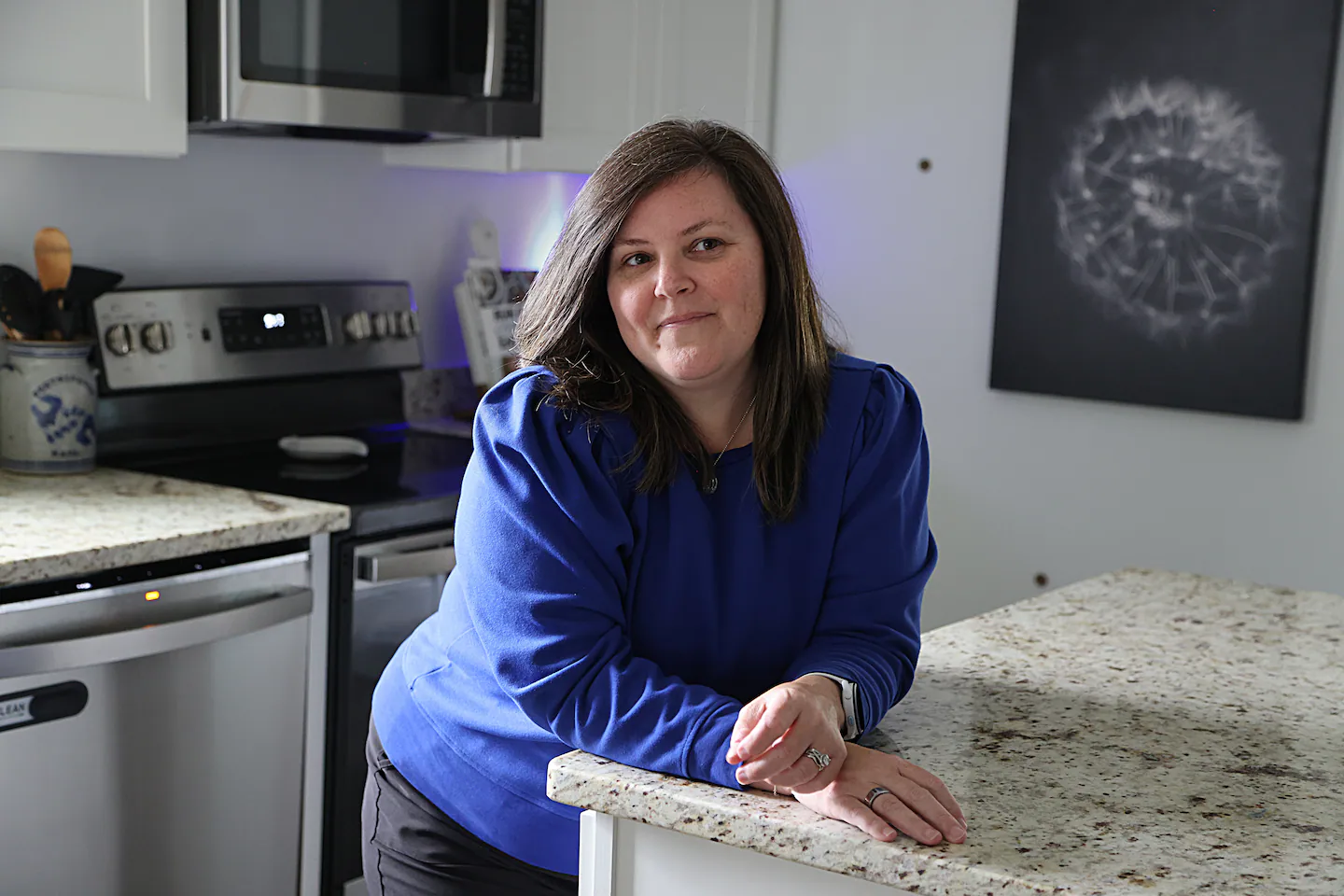Copyright Anchorage Daily News

Brace yourself before you call the Social Security Administration, as several million people do each month. The average wait time is 68.9 minutes. On the line, your experience will consist of a repeated 5-minute segment of announcements and better-than-usual hold music. Go ahead, listen. Don’t worry, you can take yourself off hold at any time. Callers stew, annoyed they will never get this hour of their life back. But some embrace their situation and listen closely to the looping melody. Because the internet can still be a place that connects you to your curiosity, some people go in search of the full song and its lyrics that float over the melody. Versions are available on YouTube, through Spotify and Apple Music, and elsewhere. It turns out to be a lovely, even stirring, song. These people connect with others on hold, thank the musician, learn the chords. “I was on hold for 4 hours with SSA and found to this instrumental. I was so relaxed and annoyed when the voice came on to interrupt to say that we are currently helping other customers! I was upset that the instrumental was being interrupted! Wonderful song.” — @cathyreid3471 Reply from @DavidDalessio: thank you for finding it here hope you don’t have to go thru that again! Reply from @UtsniatheMighty: I guess that means I have an hour and a half left. Reply from @DavidDalessio: One hope you made it thru! Imagine that — a piece of music that breaks free in small ways from our DOGE-enhanced existence. So we went to East Harlem to meet the musician behind it and played him the Social Security hold loop, on speaker. “That’s horrible!” David D’Alessio howled. He sat with his face in his hands, at his kitchen table. It was the first time he heard his song — his life’s credo — used as off-the-shelf hold music. He felt trapped, imagining himself as a caller. “I feel like I’m being punished,” D’Alessio said. “I’ve lost my free will, and now you’re trying to give me a lollipop.” D’Alessio, 54, is an independent musician who put out three albums during a career of over 30 years. He values free will and exercised it liberally in his youth. He earned a degree in mathematics, learned classical guitar and traveled around China teaching English. Back home in Tucson, he became a licensed massage therapist and a substitute teacher and jammed with his friends. “It was about embracing the moment,” one of them, drummer Paul Nossa, said. “Enjoy yourself.” Nossa tricked out a used silver school bus to turn any place with outdoor power into a concert venue for D’Alessio and himself. This could be filed under “stuff you do in your 20s.” Did D’Alessio dream he one day could say, “My music has reached hundreds of millions of listeners through the Social Security Administration?” He did not. Over time, he fell into a routine. He fixated on holding onto jobs. Music gave him a creative outlet, but he hadn’t considered himself a musician who could make a living from it. He was just a person who, as he said, threw some paint at the wall. Then one day in 2006, D’Alessio was politely asked by his friends to move off their couch. He was 35 and had just had a bad breakup. “I was pretty dark about what I was doing, where I was going, who I was,” D’Alessio said, “You know ... the whole nine.” He was stuck. That’s when “Throw Yourself In Front of It” emerged. First came the melody — the same one piped through millions of phones now. Then, over more drafts, came the words. - - - “Don’t ask the stars To give you clues Cuz your time will come And you can choose ... What are we waiting for? ... Just throw yourself in front of it." - - - It was his call to not only move forward, but also to sacrifice yourself. “That’s where David was,” said his friend and fellow songwriter, Donna Valentine. “He had an old version of himself, and he had to let that go for the new version.” When he played the song in Phoenix coffee shops, the crowd would stop mid-latte and focus on him. D’Alessio moved to New York City in 2008 in search of a bigger music market, supported by his work as a masseuse and while living in sublets. West Village crowds liked the song, too. So did the eminent singer-songwriter Tina Shafer. A Grammy-nominated producer said he wanted to make it bigger. So D’Alessio cut a sparse demo, just him and his guitar, and tried to make something happen. He made a kids’ record and collaborated with other songwriters and musicians to write, sing, coach and produce for TV, commercials and movies. “It’s who I was back then,” D’Alessio says. By 2014, he figured it was time to make money from “Throw Yourself in Front of It.” D’Alessio recorded an instrumental version with drums, bass and layers of vocals. That was posted online in a music catalogue for purchase, as the company writes, by “visionary music supervisors in TV, film and advertising.” As copyright lawyers would put it: the use of D’Alessio’s instrumental version was offered online, non-exclusively, in perpetuity, to anyone who would pay an up-front licensing fee. D’Alessio didn’t think much of it. He granted the rights to use his own recording elsewhere. With other songs, the licensing deals generated a few hundred dollars of passive income from various music supervisors — not exactly a windfall. He toured the song and his new album with his wife, Jen Blodgett, in the Southwest and along the East Coast. They had a baby, and their musical career was put on hold. Literally. And figuratively. Around Thanksgiving 2017, more than 10 years after D’Alessio wrote his song, he got a royalty check from Amazon Web Services. It amounted to a one-time payment of about $750.00, he said. The cloud computing company had bought the rights to use his instrumental version of the song and could now distribute it in their customer service pipeline to any company they supported. The song showed up in odd places. Blodgett recognized the guitar riff on a co-worker’s phone as they were on hold with Priceline. On the song’s YouTube videos, people started leaving comments of where they heard it: @mitchmorris4194: the original version of this song is absolutely amazing! Truly a great great song! I can’t believe I got stuck on your song on hold for American Home Shield... The music business is a failure your original version of this song should have 1 billion views @mdem1446: This may seem weird, but I love the instrumental version of this. Michelin used it for their on-call waiting music and this song’s grown on me. H&R Block estimated 3.3 million people heard the song last year, while roughly 16 million listened over the two years that Delta Air Lines used it, both companies said in answers to questions from The Post. In the world of hold music, even the most revered tracks are not carefully considered by phone line administrators. Selection is a kind of accident, like when Cisco System’s default music was set by an engineer who used a friend’s song. In one study of hospital switchboards, the choice of hold music was determined by the cheapest or easiest music to set up — not the music’s effect on caller emotions. Amazon Web Services did not reply to emails from The Post, and none of the companies could explain why D’Alessio’s instrumental track was their choice. The scattered scholarly research on hold music suggests that faster tempo and higher pitch are connected to more pleasant feelings. D’Alessio’s song has bright guitars and sits in the middle of popular music tempos at 84 bpm. Other studies report that using familiar music helps people to wait. A 2022 Nature Neuroscience Review paper suggests our brains are constantly seeking order in music, predicting melody and rhythm. Because the instrumental of “Throw Yourself in Front of It” repeats the same melody over four bars, it feels familiar, D’Alessio suggested. The vibe, he said, is a blend of “Phish and spa music.” By the time the song made it to your customer service journey, D′Alessio was focused on raising a daughter in Manhattan. “Yeah, he’s Mr. Mom,” Blodgett said. “Children are a wonderful way to find fulfillment and purpose,” D’Alessio said and seemed to shrug off the drive he sees in other musicians. “People get caught up in the success of their product,” he said. “And I just don’t, I don’t make art like that. You know, I’d like to. I’ve tried. But it just doesn’t fulfill me, to make me want to create.” For now, the way he engages with his audience is through the online comments from people who were stuck on the phone, in a queue. Sometimes, he apologizes to these strangers. Mostly, he thanks them. @Akira_CA: Commenting from Japan in the wide world, I also heard on hold music of Delta Air Lines and found your amazing song, thank you. Reply from @DavidDalessio: thank you for listening! Reply from @matthewmchugh5956: Heard this on hold for TurboTax help...I wouldn’t mind an hour with this song. I would love the instrument to chill to. Reply from @DavidDalessio: thanks, Matthew! Send me your email and I’ll send you the instrumental :) - - - Every month, there are roughly 8.6 million people listening to D’Alessio’s instrumental song on the Social Security Administration’s phone line, sometimes for hours. D’Alessio does not want to hear these statistics. Not because he receives zero additional income or audience from the song. Not because his song could boost the moods of people and even create the sensation that they hadn’t spent so much time on hold. D’Alessio doesn’t want to hear that so many people are listening to his song on the SSA line, because they’re stuck on the SSA line. “It’s just like a grief… where you’ve like lost your freedom for a period of time and you have to go through these stages, like anger, sadness and frustration.” D’Alessio knows that most people don’t think his song expresses anything, let alone the message to stop waiting. He feels for the Social Security Administration agents who have seen the federal government shrink around them and the callers who are frustrated and need answers. “I’m very sorry for all of the disarray and confusion that exists in, around that. This song is actually about a sort of moral clarity within yourself. So… that’s a good place for the song, actually. “I mean that’s actually, in a way, what the song is about. It’s the tension of being in an old place and moving to a new place and trying to get there.” Soon, the new place may have no hold music at all. The Social Security Administration, like many modern contact centers, has introduced callback technology — giving customers the option to hang up while they wait. “What are we waiting for? Nothing ever changed in ordinary times But these aren’t ordinary times ..."



